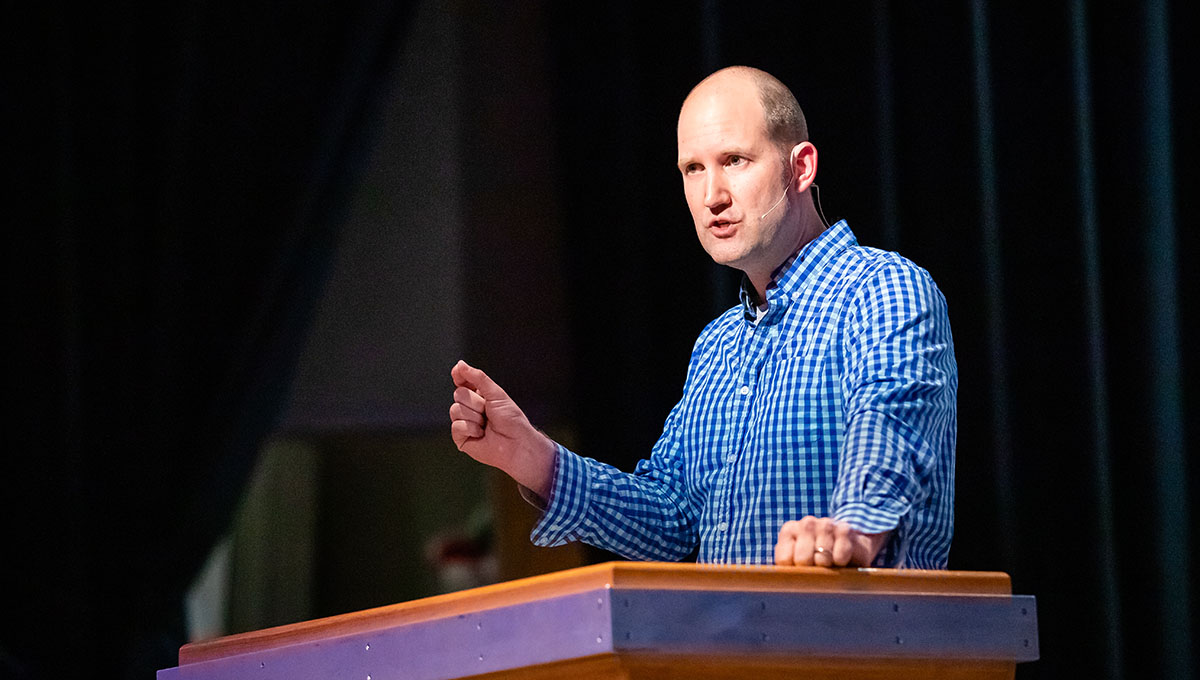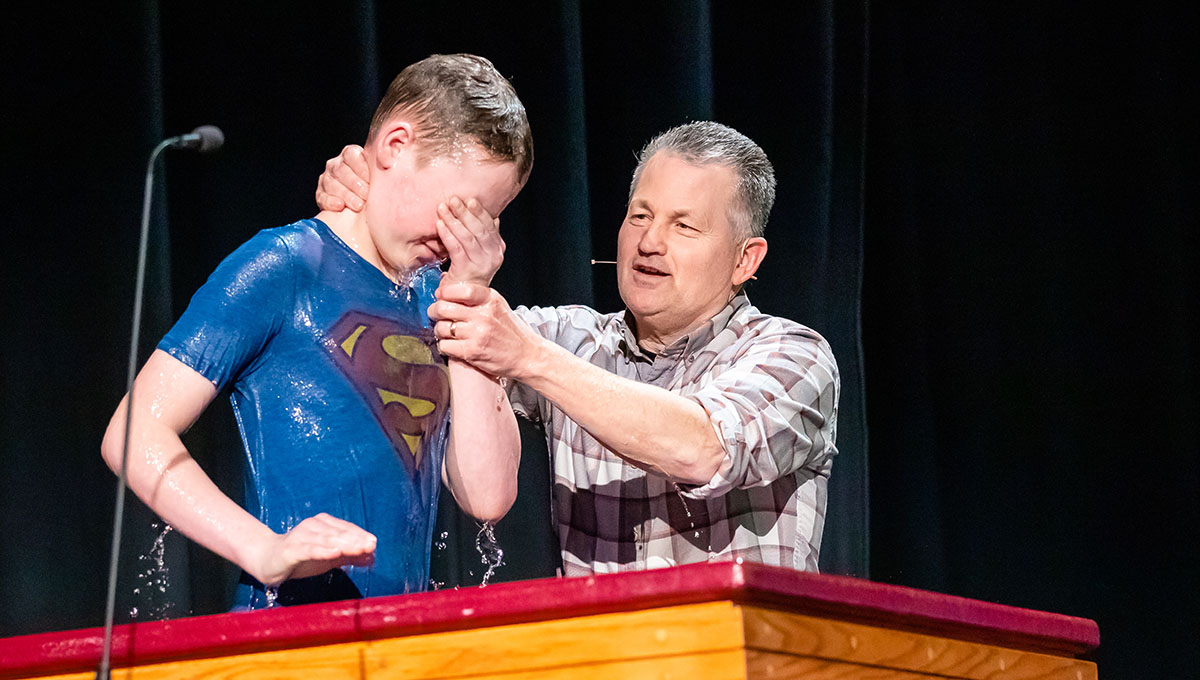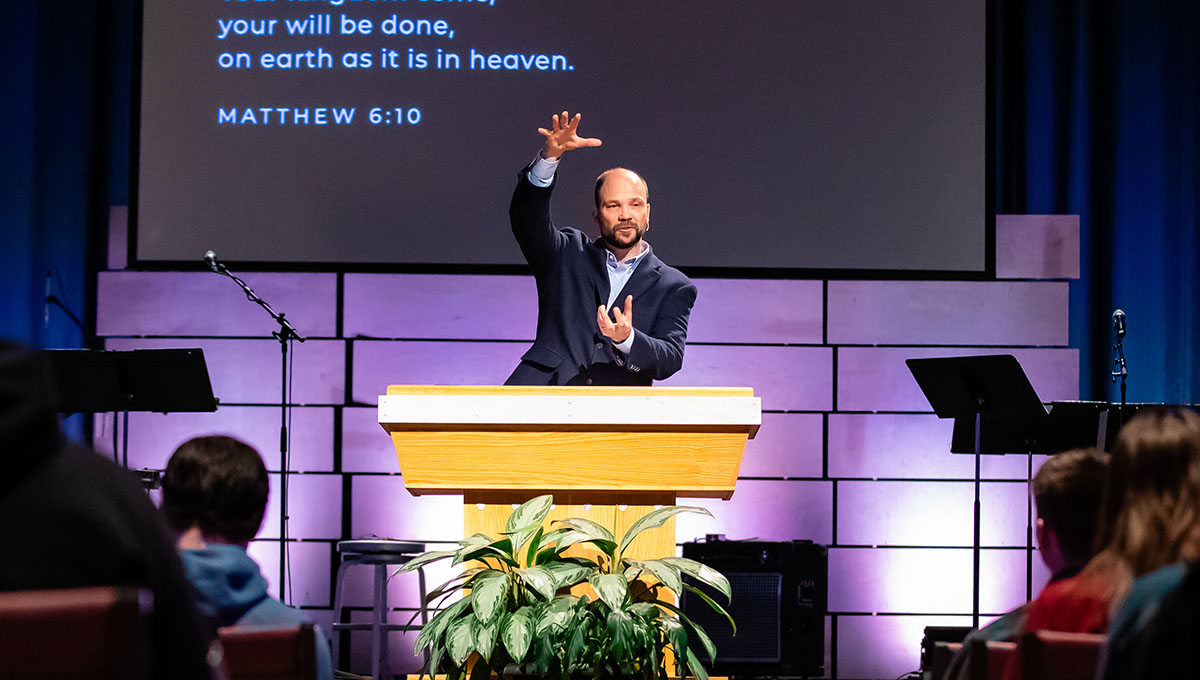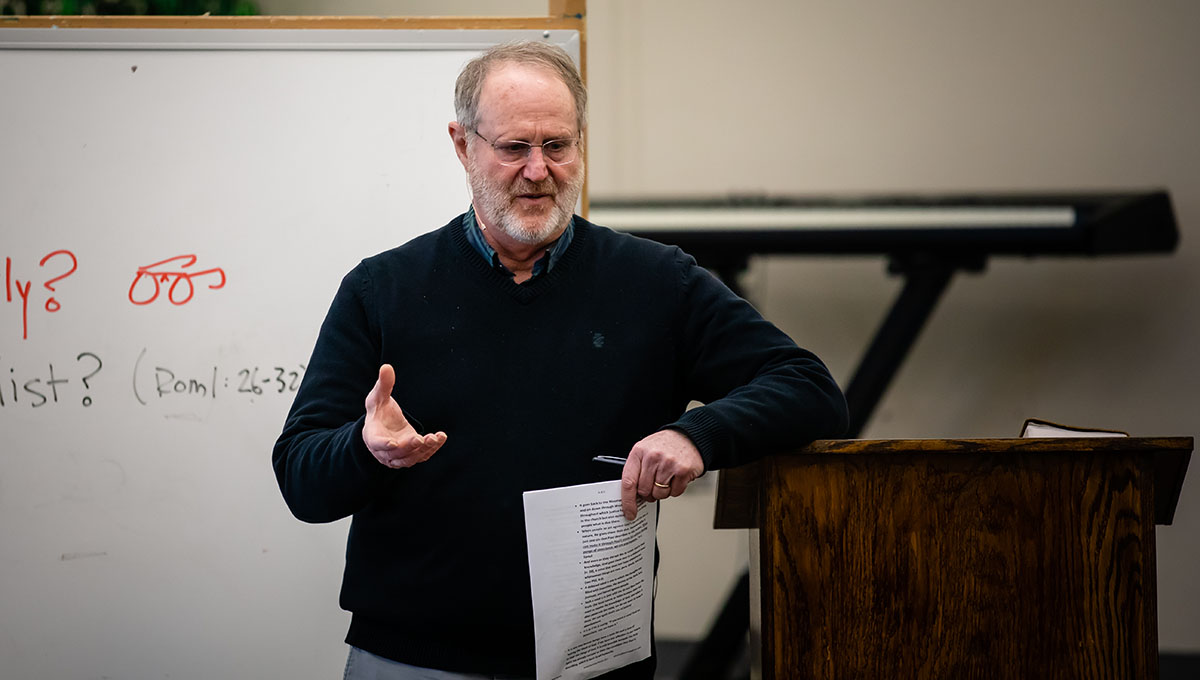To Those Who Have Gone Before Us
- Steve Hatter

Heresy is the term used to describe a doctrine contrary to Biblical truth. From its infancy, Christ’s church has needed to fight against a myriad of heresies emanating from the supernatural and human enemies of God. Church history shows the avenues of heretical assault have generally come from within three doctrinal categories: the person and work of Jesus Christ, the nature of the Gospel, and the validity and authority of Scripture. Church history also testifies to brave church leaders who fought for sound doctrine with meaningful communications that rested on the authority of God’s Word.
The Chalcedonian Creed (451 A.D.) was one such meaningful communication. The creed was a fifth-century remedy to attacks on the person and work of Jesus Christ—mainly in the forms of Apollinarianism, Nestorianism, and Eutychianism. These erroneous avenues of thought argued against Jesus being the “God-man” explained in orthodox Christian doctrine. As I considered my weekly blog topic, I thought a short essay on the Chalcedonian Creed might prove an encouragement to you in our wildly uncertain times. It’s good to remember those who have gone before us and fought the same battles we see coming to us today! Our church fathers were noble and brave and we can find inspiration in their work.
So here we go. I want to first consider the heresies the creed’s authors sought to refute. Next, I’ll offer compelling Biblical evidence that Jesus Christ is indeed the unique “God-man” who is fully God and fully man. Finally, I’ll show you a sectional analysis of the ancient creed itself, noting the areas in which the creed—though lacking the authority of inspired Scripture—represents Biblical truth.
The Heresies
The Council at Chalcedon in A.D. 451 convened to address misunderstandings regarding Christ’s deity and humanity. The Apollinarians believed that Christ possessed a natural body and an immortal sensitive soul, but they denied him a genuinely human mind or experience. They thought, as one writer phrased it, that “Christ was God masquerading in human flesh.”
The Nestorian and Eutychian heresies also misrepresented the mystery of Christ’s divine and human natures. The Nestorian heresy held that Christ was two separate persons cohabitating in one body. He was the persons of God and a man, having two distinct natures and two wills that operated independently in a “shared” body. Such error implies a schism that diminishes both the deity and humanity of Christ.
The Eutychian heresy taught that although Christ was divine and human, His human nature absorbed into His divine nature. Such thinking devalues the necessity and blessing of Christ’s humanity. The writer of Hebrews spoke of both need and benefit realized in the human nature of Christ:
“Therefore he had to be made like his brothers in every respect so that he might become a merciful and faithful high priest in the service of God, to make propitiation for the sins of the people. For because he himself has suffered when tempted, he is able to help those who are being tempted” (Heb. 2:17—18).
Sound Doctrine: The Hypostatic Union
In response to these threats to sound doctrine, the Council of Chalcedon agreed that Jesus was fully human and fully divine, but in a wholly unified manner. As such, they sought language to clarify and explain this unique reality of the second member of the Trinty. The Ecumenical Council of Chalcedon insisted the term hypostasis be used as it was in their accepted Trinitarian definition and draws appropriate attention to the person of Christ. The term hypostatic means “personal,” therefore, the hypostatic union is the personal union of Jesus’s two natures. Jesus exists as one person with two distinct natures, without confusion, change, division, or separation. In other words, Jesus Christ took on human nature yet remained “fully” God simultaneously. Jesus always had been God (John 8:58, 10:30), but at the incarnation, Jesus became a human being (John 1:14). The addition of His human nature to the eternal divine nature is our one and only Lord Jesus, the God-man. One writer summed the hypostatic union this way: “The unique and powerfully significant union maintains “Christ’s deity undiminished and his humanity unexalted.”
The Creed—A Component Parts Analysis
The Chalcedonian Council sought to affirm Christ’s deity undiminished and humanity unexalted in the form of a creed. Their creedal statement, although human in its motive and language, rested on the firm foundation of inspired Scripture. They knew the creed must emanate from the inerrant, wholly sufficient, and uniquely authoritative recorded Word of God.
The following is a component analysis of the Chalcedonian Creed showing its Scriptural foundations.
We, then, following the holy Fathers, all with one consent, teach men to confess one and the same Son, our Lord Jesus Christ, the same perfect in Godhead and also perfect in manhood; truly God and truly man, of a reasonable (meaning rational) soul and body; consubstantial (meaning coessential) with the Father according to the Godhead, and consubstantial with us according to the Manhood; in all things like unto us,
This lead section confirms Jesus Christ as “perfect in Godhead,” “truly God,” and “consubstantial with the Father according to the Godhead.” He is the Son of God, the second member of the Trinity, and the One who shares every attribute of the living Godhead in complete and eternal coequality. The chosen language demonstrates the council participant’s understanding of Christ’s unassailable deity.
Many, many Scriptural passages attest to Christ’s unqualified deity. A few attributes of deity ascribed to Jesus with their Scriptural references follow here: Micah 5:2, John 1:1, and Col 1:17 affirm Christ’s eternality. Hebrews 1:10—12 supports His immutability. Matthew 1:14, Luke 9:32, and John 17:5 attest to His glory, and Luke 4:34, John 6:69, and Hebrews 7:26 testify to His holiness.
The creed’s lead section also affirms Christ as “perfect in manhood,” “truly man, of a rational soul and body,” and “consubstantial with us according to the Manhood; in all things like unto us.” Here, the chosen language proves the council member’s understanding of Scripture’s depictions and explanations of Christ’s incarnation. In His incarnation, Christ voluntarily yielded the independent exercise of his divine attributes to the will of his heavenly Father as described in Philippians 2:5–7. Yet, the council participants also understood that while the human nature that the Son of God received in his incarnation allows him to experience humanity, he does not exist as two persons, nor does he relinquish deity.
He is but one person with two natures—the divine and the human. Each nature possesses its own will, but they operate together in perfect unity. God the Father prepared Christ’s physical human body (Heb. 10:5–7; Ps. 40:6–8) for the incarnation so that the Son of God might do the will of the Father. In John 17:24, Christ’s divine will appears in his Trinitarian relationship to the Father before the foundation of the world. But in the garden of Gethsemane, Jesus conforms his human will to the Father’s will (Matt. 26:39).
Moreover, humanness involves undergoing, not just encountering, all that mankind commonly experiences. From the start of His incarnate life until the end of his earthly journey, Jesus experienced birth (Matt. 2:1), growth (Luke 2:40), exhaustion (John 4:6), sleep (Mark 4:38), hunger (Matt. 4:2; 21:18), thirst (John 4:7; 19:28), anger (Mark 3:5), sorrow (Matt. 26:37), weeping (Luke 19:41; John 11:35), compassion (Matt. 9:36), love (Mark 10:21; John 11:3, 5, 36), joy (Luke 10:21; John 15:11), temptation (Matt. 4:1; Heb. 4:15), prayer (Matt. 14:23; Heb. 5:7), suffering (Matt. 16:21; Luke 22:44; Heb. 2:18), and death (Mark 15:37–39; Luke 23:44–46; John 12:24, 33; Rom. 5:6, 8; Phil. 2:8). The creed confirms Jesus was, indeed, truly and completely human—as well as truly and completely God.
Without sin; begotten before all ages of the Father according to the Godhead, and in these latter days, for us and for our salvation, born of the Virgin Mary, the Mother of God, according to the Manhood; one and the same Christ, Son, Lord, Only-begotten
The middle section of the creed speaks to the counsel participant’s affirmation of the utter uniqueness of Jesus Christ. This uniqueness qualifies Him to alone fulfill God’s covenant promises recorded in Scripture and hence redeem humanity through His shed blood. Ephesians One affirms that the grace plan of God for humanity was in motion “before the foundations of the world.” Consequently, for us and our salvation, Jesus had to be born of a virgin (Gen 3:15; Gal 4:4).
Moreover, the integrity of the Gospel record concerning Jesus rests heavily on the truth of the virgin birth. If Matthew and Luke are undependable in their accounts of Mary’s pregnancy occurring without male human involvement, their entire history of Jesus becomes suspect. In addition, the virgin birth allows for the preexistence of the divine person and nature. The eternal Son of God existed before the miraculous conception in Mary’s womb. Moreover, without a virgin conception of Jesus, there can be no guarantee of his sinlessness, a necessity for the substitutionary atonement in payment for human sin.
To be acknowledged in two natures, inconfusedly, unchangeably, indivisibly, inseparably; the distinction of natures being by no means taken away by the union, but rather of the property of each nature being preserved, and concurring in one Person and one Subsistence, not parted or divided into two persons, but one and the same Son, and only begotten, God, the Word, the Lord Jesus Christ; as the prophets from the beginning (have declared) concerning him, and the Lord Jesus Christ himself has taught us, and the Creed of the holy Fathers has handed down to us.
The final section of the creed represents the participant’s uncompromising desire to refute the specific heresies that drew them to meet. Their language fortifies the two-natures-unified-in-one-person stance by using strong defensive adjectives such as inconfusedly, unchangeably, indivisibly, and inseparably. Such wording sought to prevent any more heretical “isms” regarding the hypostatic union.
Further, the church leaders sought to eliminate logical footholds to diminish, now or ever, either nature of Jesus Christ, or to leave an opening for another person to arrive on earth with two natures in one person. Jesus is one of a kind. He is the God-man who enraged the Jewish leaders with His claims of being equal with God, as seven “I AM” statements in the Gospel of John attest.
Relevance Today
God’s enemies remain unrelentingly focused on disrupting the Gospel and condemning souls to hell. Ensuring sound doctrine is preached and taught in evangelical churches is as critical today as fifteen hundred years ago. Modern writer David Mathis describes the importance of imbibing the vital doctrine of the God-man in this way:
“Because of this hypostatic (one-person) union, Jesus Christ exhibits an unparalleled magnificence. No one person satisfies the complex longings of the human heart like the God-man. God has made the human heart in such a way that it will never be eternally content with that which is only human. Finitude can’t slake our thirst for the infinite. And yet, in our finite humanity, we are significantly helped by a point of correspondence with the divine. God was glorious long before he became man in Jesus. But we are human beings, and un-incarnate deity doesn’t connect with us in the same way as the God who became human. The conception of a god who never became man (like Allah) will not satisfy the human soul like the God who did.”
We, the church, must remain steadfast in our fight for truth, and in our modern times, that truth is found exclusively in God’s Word. Oh, what a gift we have in His perfect Word!










